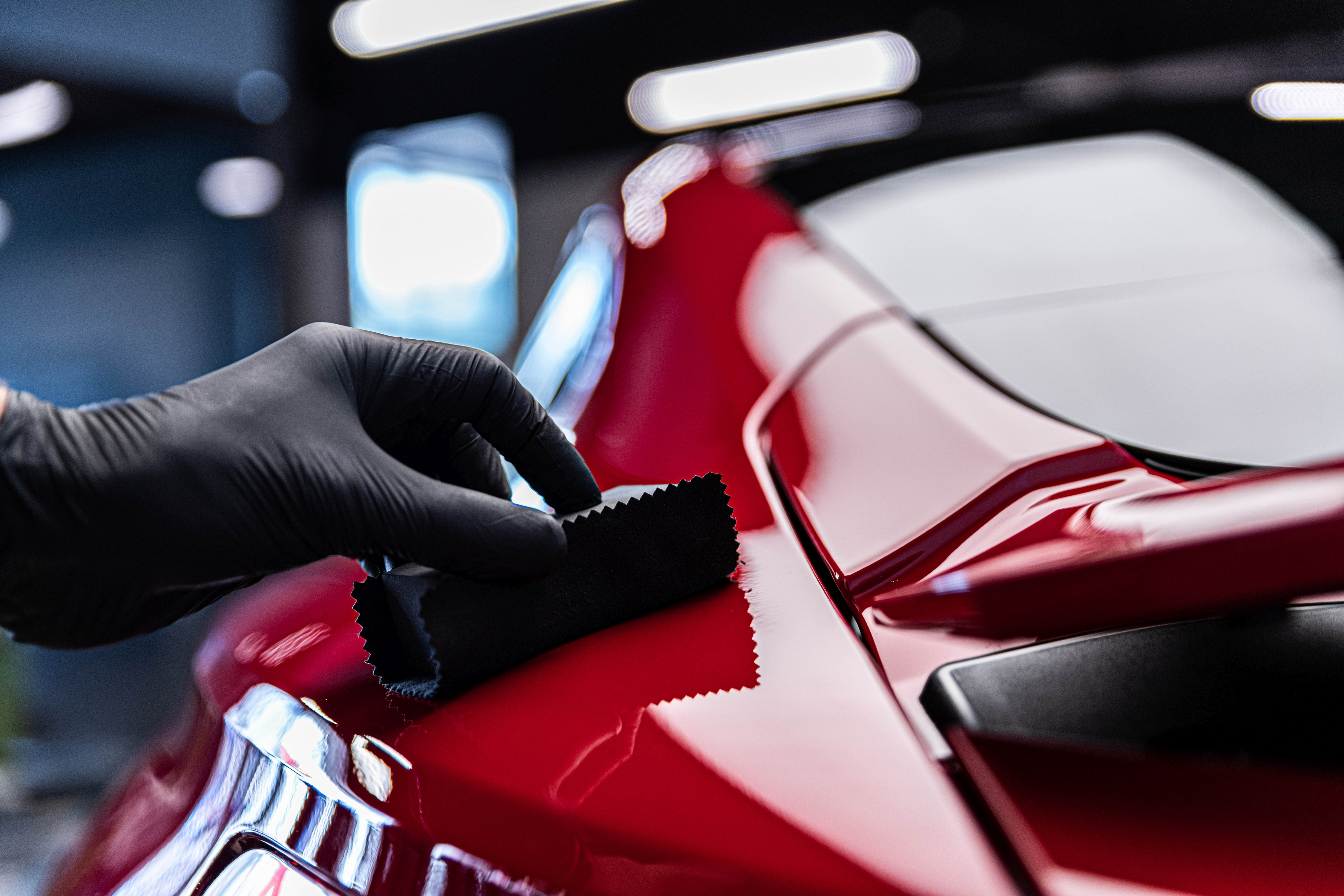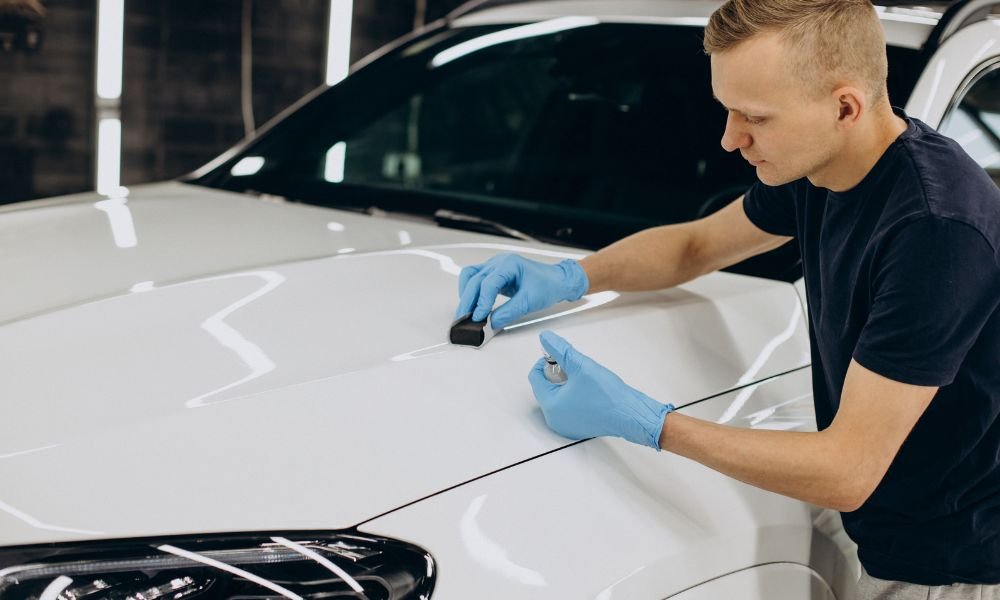Ceramic Coating vs. Sealants: Recognizing the Distinctions for Your Auto
Ceramic Coating vs. Sealants: Recognizing the Distinctions for Your Auto
Blog Article
The Importance of Ceramic Coating: Securing Your Car's Outside With Accuracy
In an age where keeping the practical and aesthetic honesty of your automobile is critical, ceramic finishing becomes a crucial option. This protective layer not just defend against environmental difficulties however likewise elevates the aesthetic charm of your vehicle. With its unique bonding residential properties, ceramic finishing provides a degree of protection that much exceeds standard waxing methods. Exactly how specifically does it achieve such impressive results? As we check out the subtleties of its application and compare it to various other alternatives, one can not wonder however aid regarding the specifics that make this technology vital for contemporary vehicle treatment.
Benefits of Ceramic Coating
When it comes to protecting a cars and truck's visual allure, ceramic layer provides substantial advantages. By creating a semi-permanent bond with the car's paint, ceramic coverings successfully avoid oxidation and fading, making certain that the auto preserves a glossy, showroom-like finish for an extensive period.
In enhancement to its safety high qualities, ceramic finishing provides remarkable hydrophobic residential or commercial properties, creating water and various other liquids to grain off effortlessly. This feature streamlines the cleaning procedure, as dirt and debris are less most likely to follow the surface, lowering the regularity and initiative needed for upkeep. The finish's resistance to chemical stains from acidic contaminants like bird droppings and tree sap is another notable advantage, minimizing possible paint damage.
Ceramic coatings likewise boost scrape resistance, providing a layer that can soak up small abrasions and swirl marks. This characteristic is particularly useful in maintaining a beautiful surface area, lowering the chance of noticeable blemishes and protecting the honesty of the vehicle's paintwork over time.

Exactly How Ceramic Finish Works
Recognizing the technicians behind ceramic coating exposes its effectiveness as a safety remedy for vehicles. Ceramic coverings are essentially liquid polymer applications that chemically bond with a car's factory paint, creating a protective layer. This layer acts as a barrier against ecological pollutants such as crud, dirt, and ultraviolet rays, which can weaken an automobile's outside over time. The vital component in ceramic coating is silicon dioxide (SiO2), which originates from quartz crystals and is recognized for its extraordinary solidity and resilience.
Application of ceramic covering entails a meticulous procedure. This guard boosts the automobile's gloss and hydrophobic homes, helping with much easier cleansing by triggering water and impurities to bead and slide off easily.
Additionally, the finishing's molecular framework offers resistance to minor scratches and chemical spots. Unlike waxes or sealers that sit on top of the paint, ceramic finishings incorporate with the surface, using long-lasting security. This assimilation is essential to its performance, ensuring the car's surface stays pristine for many years.
Contrasting Ceramic Coating to Alternatives
In the world of auto protection, ceramic covering stands as a formidable option when compared to conventional alternatives such as waxes and sealants. While waxes provide a short-term lustrous finish, generally lasting just a few weeks to months, ceramic coatings provide a longer-lasting solution, often enduring for several years. This durability is attributed to the chemical bonding that occurs when ceramic layers are used, developing a solid layer that is resistant to ecological threats.
Contrastingly, sealers, although more resistant than waxes, still drop short of the robust defense supplied by ceramic finishes. Sealants can generally last for as much as a year, offering a synthetic guard against particular elements. However, they lack the superior hydrophobic properties and UV security that ceramic coverings deliver.
Moreover, ceramic layers provide improved scrape resistance, which neither waxes nor sealers can successfully match (ceramic coating). This is specifically beneficial in preserving an automobile's beautiful look. Additionally, ceramic coverings simplify upkeep efforts by lowering the adherence of dirt and grime, thus helping with simpler cleaning. In summary, while standard waxes and sealants provide fundamental security, ceramic finishes provide a detailed, long-term option that significantly maintains the automobile and enhances's outside finish.
Application Refine Described
Applying ceramic finish to an automobile calls for a meticulous process to make certain optimal outcomes and resilience. Once cleansed, the automobile is dried and brightened to remove any type of imperfections, as any type of existing scrapes or swirls can become more pronounced after the finish is used.
Complying with surface preparation, the application of the ceramic covering begins. The coating is normally applied in a climate-controlled setting to stop dust bits from resolving on the fresh cleaned surface area. Making use of an applicator pad, the ceramic finish is applied in tiny sections to make sure even coverage. It is necessary to comply with the manufacturer's guidelines regarding the appropriate treating time Going Here and application density.
After application, the covering requires a details healing duration, throughout which the automobile must be shielded from water and pollutants. This treating process can differ relying on the product yet generally ranges from 24 to 48 hours. Eventually, this comprehensive procedure is pivotal in attaining a shiny and durable surface.
Maintenance Tips for Long Life
To maintain the longevity of a ceramic finish, adherence to a self-displined upkeep regimen is vital. Normal cleaning is vital; utilize a pH-neutral auto shampoo and soft microfiber click here for info mitts to stay clear of abrasions. Prevent automated automobile washes, as their extreme brushes can endanger the covering's stability. Rather, choose a hand clean to guarantee complete yet gentle cleaning.
Post-wash, drying the automobile with a tidy microfiber towel protects against water spots that may degrade the covering gradually. Additionally, use a ceramic layer booster every few months. These boosters reinforce the hydrophobic residential or commercial properties and boost the coating's safety capacities, ensuring it continues to be efficient versus pollutants.
Bear in mind that car park places play an important role in maintenance. ceramic coating. Whenever possible, park in shaded areas to minimize UV direct exposure, which can gradually weaken the layer. For long-term storage, think about making use of a vehicle cover for included protection versus ecological elements
Verdict
In final thought, ceramic finishing offers as an essential safety layer for car exteriors, using long-lasting defense versus environmental aspects such right here as crud, dust, and uv rays. Comprehending the application process and adhering to maintenance recommendations are necessary for making the most of the durability and efficiency of ceramic finishing.
When it comes to preserving an automobile's visual appeal, ceramic finish uses substantial benefits. By creating a semi-permanent bond with the car's paint, ceramic finishings effectively stop oxidation and fading, making sure that the automobile maintains a glossy, showroom-like coating for an extended period. Ceramic layers are basically liquid polymer applications that chemically bond with a car's factory paint, developing a protective layer. In recap, while conventional waxes and sealants provide fundamental defense, ceramic layers provide a thorough, long-term option that substantially protects the vehicle and boosts's exterior surface.

Report this page